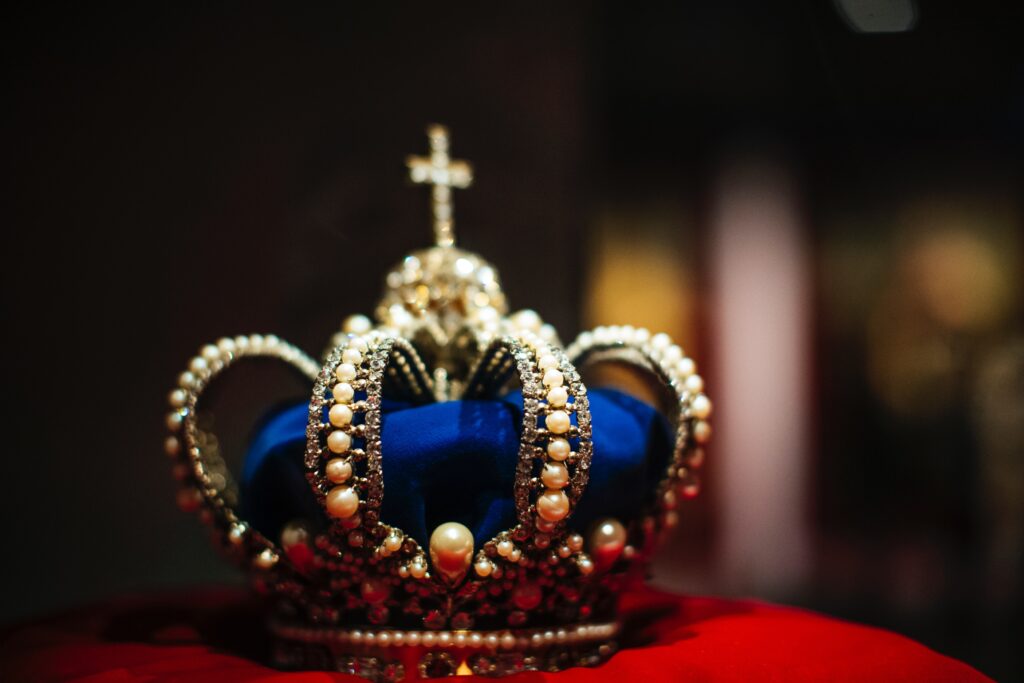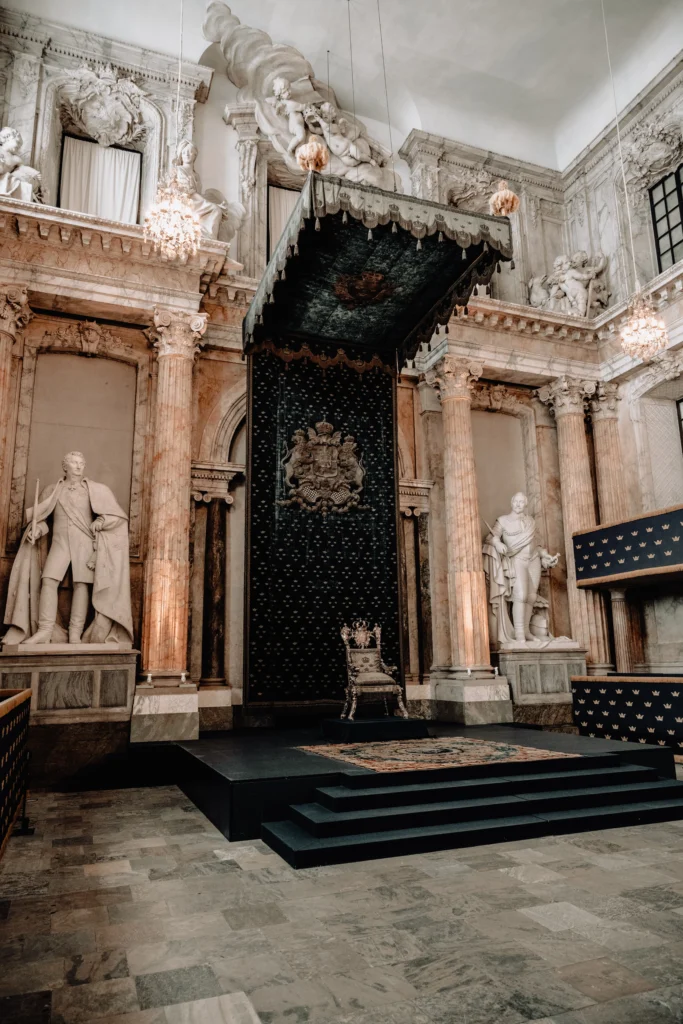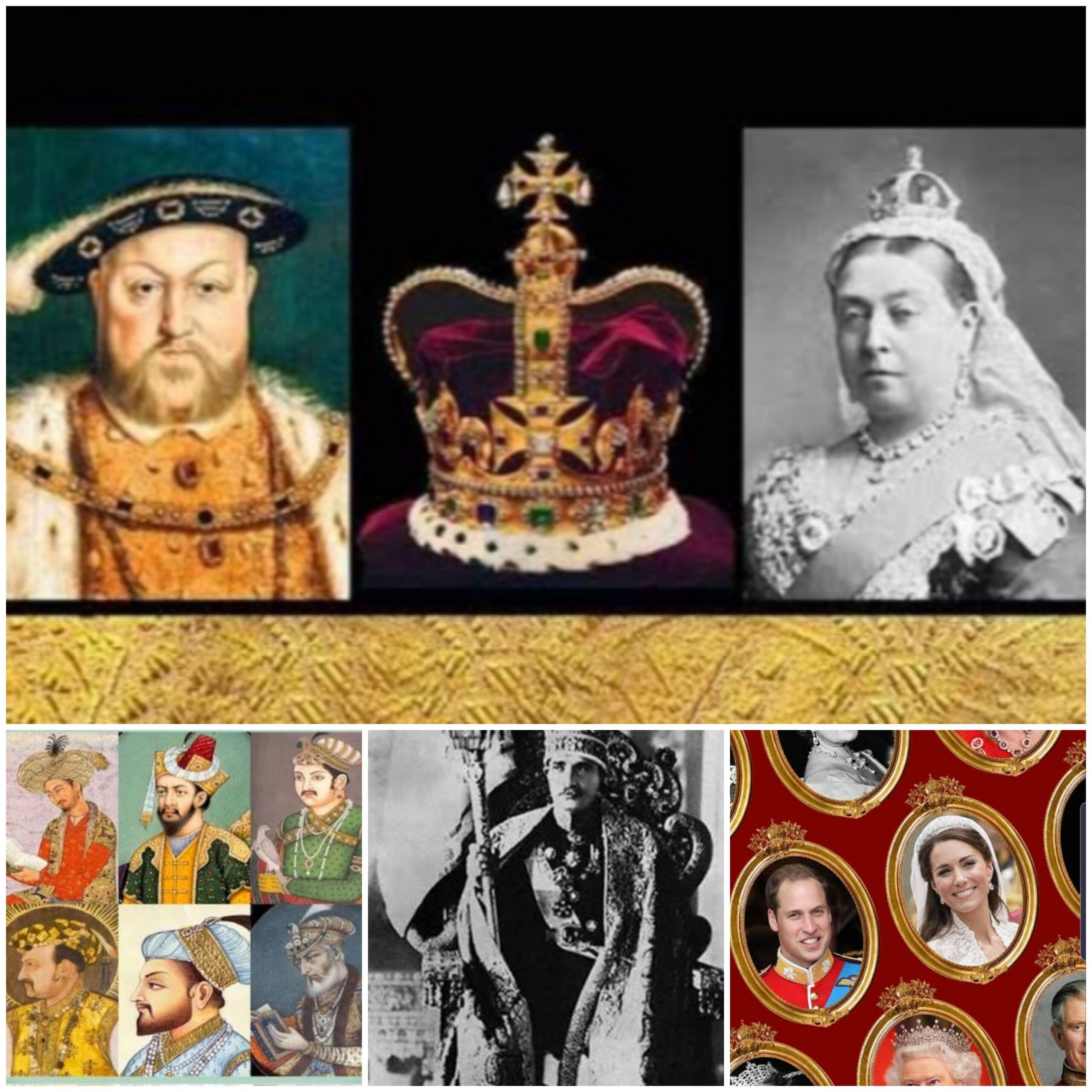Welcome, dear readers, to a fascinating journey into the world of royalty! and Countries that still have a Royal Family In an age where power dynamics are constantly shifting, it is intriguing to discover that there are still countries that have chosen to keep their monarchy intact. These modern-day kingdoms not only add charm and tradition to their nations but also hold significant historical and cultural importance.
While many may associate monarchies with fairy tales or bygone eras, they continue to thrive in various forms around the globe. From hereditary rulers passing down their crowns through generations to constitutional monarchs serving as figureheads alongside elected governments – we will explore the diverse types of monarchy that exist today.

Table of Contents
Countries That still have a Royal family
Join us on this regal adventure as we delve into lines of succession, current royal families worldwide, and even uncover which countries could potentially see King Charles III ascend their thrones. So, grab your virtual passport as we begin our exploration of these majestic lands!
Types of monarchy
Monarchies come in different forms, each with its own unique characteristics and systems of governance. Let’s explore the two main types of monarchy: hereditary monarchies and constitutional monarchies.
Hereditary monarchies are those where the position of ruler is passed down through bloodlines. The title is typically inherited by the eldest child or closest relative, ensuring a continuation of power within the royal family. These types of monarchies often have long-standing traditions and historical significance attached to their reigns.
On the other hand, constitutional monarchies operate under a system where the powers of the monarchy are limited by a constitution or set of laws. In these countries, such as Sweden or Japan, while there may be a royal family holding symbolic authority, most political decisions are made by elected officials.
Both types have their merits and drawbacks. Hereditary monarchies can provide stability and continuity but run the risk of inadequate leadership if an unfit heir ascends to power. Constitutional monarchies offer more democratic principles but still retain cultural value and serve as national symbols.
Understanding these distinctions allows us to appreciate how different countries choose to maintain their royal families’ roles in modern society. Whether it’s through hereditary succession or as ceremonial figures within constitutional frameworks, these nations continue to celebrate their regal heritage in distinct ways!
Hereditary monarchies
Hereditary monarchies are a type of monarchy where the crown is passed down through generations within a specific family. The position of the monarch is usually inherited by the eldest child, regardless of gender. This means that if the current king or queen has children, their eldest child will become the next in line to rule.
One advantage of hereditary monarchies is stability. Since there is a clear line of succession, there is no need for political campaigns or elections to determine who will be the next ruler. This can help to prevent power struggles and ensure a smooth transition from one generation to another.
However, hereditary monarchies also have their disadvantages. Critics argue that it perpetuates privilege and inequality, as those born into royal families automatically assume positions of power without having to earn them based on merit or ability. Additionally, there may be concerns about whether members of royal families are best suited for leadership roles in modern society.
Despite these criticisms, hereditary monarchies continue to exist in several countries around the world today. They serve as symbols of national identity and traditions that have been preserved throughout history.
Constitutional monarchies
Constitutional monarchies, unlike hereditary monarchies, operate under a system where the king or queen’s powers are limited and defined by a constitution. In these countries, the monarchy serves as a ceremonial and symbolic figurehead rather than holding significant political power.
One of the key features of constitutional monarchies is that they have parliamentary governments alongside the monarchy. This means that elected officials hold decision-making authority while the royal family acts as a unifying symbol for their nation.
In constitutional monarchies, such as the United Kingdom, Spain, and Japan, kings or queens typically have little to no involvement in day-to-day governance. Instead, they carry out ceremonial duties like opening parliament sessions or attending state functions.
These modern-day constitutional monarchies provide stability and continuity in their respective nations. Their presence often helps maintain national identity and strengthens cultural heritage without interfering with democratic processes.
While some argue that constitutional monarchies are outdated in today’s world, many countries continue to find value in having an enduring link to their history through their royal families.
Lines of succession
Lines of succession play a crucial role in determining who will inherit the throne and become the next monarch. In hereditary monarchies, where the crown is passed down through bloodlines, the line of succession follows a specific order. Typically, this means that the eldest son or daughter of the current monarch becomes the heir apparent.
However, modern constitutional monarchies have introduced changes to ensure gender equality and allow for other members of the royal family to ascend to the throne. In some countries, like Sweden and Belgium, absolute primogeniture is followed, meaning that gender no longer determines who will be next in line.
Other countries have adopted male-preference primogeniture or mixed systems where male heirs are given priority but female heirs can still inherit if there are no eligible males.
In cases where there are no direct heirs or available successors within the main royal family, distant relatives may enter into consideration as potential successors. This helps maintain continuity within these ancient institutions while adapting to changing societal norms and expectations.
The lines of succession can sometimes be complex due to various historical events such as abdications or disputed claims. Nonetheless, they serve as an important framework for ensuring stability and continuity within these nations’ monarchy systems.
Current monarchies
Current monarchies continue to thrive in various parts of the world, showcasing a rich tapestry of history and tradition. From Europe to Asia, these royal families play an important role in their respective countries.
In Europe, several nations still have active monarchies. The British royal family is perhaps one of the most famous, with Queen Elizabeth II reigning for over six decades. Other European countries with current monarchies include Spain, Netherlands, Sweden, Norway, Denmark and Belgium. Each royal family brings its unique charm to the table.
Moving outside of Europe, we find other continents that also embrace monarchy as part of their governance structure. Japan’s imperial family holds great significance within Japanese culture and society. Thailand’s monarchy has deep historical roots and continues to be highly revered by its people.
Bhutan is another country that cherishes its monarchy. Known as the “Land of the Thunder Dragon,” Bhutan’s king plays a pivotal role in maintaining harmony and happiness among its citizens through policies like Gross National Happiness.
These are just a few examples of current monarchies around the globe. While each country may have different customs and traditions associated with their royal families, they all share a common thread – preserving heritage while embracing modernity.
List of current royal families in Europe
Europe is home to several countries that still have a royal family, adding a touch of tradition and history to the modern world. These monarchies vary in their roles and powers, but they all contribute to the cultural fabric of their respective nations.
In Scandinavia, we find three reigning monarchies: Denmark, Norway, and Sweden. Queen Margrethe II reigns over Denmark with her son Crown Prince Frederik as her heir. King Harald V is the ruler of Norway with his son Crown Prince Haakon next in line. Meanwhile, King Carl XVI Gustaf leads Sweden’s royal family with Crown Princess Victoria as his successor.
Moving eastward, we encounter two more European monarchies: Spain and the United Kingdom. King Felipe VI sits on the Spanish throne after succeeding his father Juan Carlos I. In the United Kingdom, Queen Elizabeth II has reigned for decades with her eldest son Prince Charles set to become king.
Additionally, there are other smaller European countries like Belgium under King Philippe; Luxembourg led by Grand Duke Henri; Netherlands ruled by King Willem-Alexander; Monaco governed by Prince Albert II; Liechtenstein headed by Prince Hans-Adam II; and Andorra jointly ruled by two co-princes – one being France’s president and the other being Spain’s bishop of Urgell.
These royal families may have varying degrees of political power or ceremonial duties within their countries but they all serve as symbols of national identity and continuity in an ever-changing world.
Royal families of other continents
While Europe may be famous for its long-standing royal families, it’s important to remember that there are monarchies in other parts of the world as well. Let’s take a journey beyond Europe and explore some of the fascinating royal families found on other continents.
In Asia, we find countries like Japan and Bhutan with their revered imperial families. The Japanese Imperial Family is one of the oldest hereditary monarchies in the world, tracing its roots back over 2,600 years. Similarly, Bhutan’s Wangchuk dynasty has been ruling since 1907 and holds great significance for the country’s cultural identity.
Moving to Africa, we encounter kingdoms such as Morocco and Eswatini (formerly known as Swaziland). Morocco boasts an ancient monarchy that goes back centuries and plays a vital role in maintaining stability within the country. As for Eswatini, King Mswati III continues to uphold his traditional authority while also embracing modernization efforts.
Heading over to Oceania, Tonga stands out with its distinctive monarchy. King Tupou VI rules this Polynesian kingdom where customs and traditions hold immense importance in everyday life. Despite changing times, Tonga remains firmly connected to its monarchical heritage.
Countries That still have a Royal Family
Let us not forget about South America where Brazil was once ruled by an imperial family until 1889 when it transitioned into a republic. Although Brazil no longer has a reigning emperor or empress today, discussions surrounding restoration occasionally arise among certain circles.
These examples highlight how royalty extends far beyond European borders. Each continent offers unique insights into different systems of governance and cultural practices associated with monarchy. It’s truly fascinating how these diverse royal families continue to shape their respective nations’ identities and histories.
As we delve deeper into exploring these global monarchies further down our blog post series on “Countries That Still Have a Royal Family,” you’ll discover even more intriguing stories and facts about these fascinating dynasties. Stay tuned for more royal revelations!
Countries with King Charles III as their king
One of the most anticipated events in recent history is the ascension of Prince Charles to become King Charles III. While he has not yet taken the throne, there are several countries where he will serve as monarch once that day arrives.
First on the list is his home country, the United Kingdom. As the eldest son of Queen Elizabeth II, Prince Charles is next in line to inherit the throne. He will become King Charles III upon her passing or abdication.
In addition to ruling over England, Scotland, Wales, and Northern Ireland, King Charles III will also be the sovereign of 15 other Commonwealth realms. These include countries such as Australia, Canada, New Zealand, and Jamaica.
It’s important to note that each country has its own unique constitutional arrangements regarding their monarchy. Some have a purely symbolic role for their royal family while others grant them more political power.
While it’s uncertain when exactly Prince Charles will ascend to become king, one thing is for sure – these countries will welcome him as their new monarch with open arms and continue their traditions under his reign.

Conclusion
While the world has seen many changes in governance over the years, there are several countries that still proudly maintain their royal families. These monarchies add a touch of tradition and continuity to the modern world.
We explored two types of monarchy: hereditary monarchies and constitutional monarchies. Hereditary monarchies pass down the throne from one generation to another within a specific family, while constitutional monarchies have limited powers and serve as figureheads for their nations.
The lines of succession play a crucial role in determining who will become the next king or queen. In some cases, it follows strict primogeniture rules, while others may allow for gender equality or even adoption.
Europe is home to numerous current royal families. From Queen Elizabeth II in the United Kingdom to King Felipe VI in Spain, these royals continue to carry out their ceremonial duties with grace and poise. However, royalty extends beyond Europe’s borders too, with countries like Japan and Thailand boasting long-standing imperial traditions.
It’s worth noting that if Prince Charles were to ascend to the throne following Queen Elizabeth II’s reign as expected, several countries around the world would see him become their king due to historical ties between Britain and other nations.
While some may question the relevance of having a royal family in today’s society, these institutions undoubtedly hold cultural significance for many people worldwide. They represent history, heritage, and national pride for those who cherish their country’s traditions.
Whether you’re fascinated by regal pomp and circumstance or simply interested in learning about different forms of government around the globe – long live kings and queens!
Queen Elizabeth II’s Golden Jubilee celebrations through the years, How Queen Celebrated?
Are there any countries that still have a royal family?
Yes, there are several countries around the world that still have a royal family. These countries often have different types of monarchies, such as hereditary or constitutional.
What is the difference between hereditary and constitutional monarchies?
A hereditary monarchy is one where the position of monarch is passed down through bloodlines within a specific family. In contrast, a constitutional monarchy is when the role of the monarch is purely ceremonial, and their powers are limited by a constitution or other governing body.
How does succession work in these royal families?
The rules for succession vary depending on each country’s traditions and laws. In some cases, it may be based on primogeniture, where the eldest child inherits the throne. Others may follow male-preference primogeniture or even absolute primogeniture, which allows females to inherit equally with males.
Which European countries currently have royal families?
Several European nations still maintain their own royal families, including Spain, Sweden, Norway, Denmark, Belgium, Netherlands, Luxembourg and Monaco.
Do any non-European continents also have reigning monarchs?
Indeed! Countries like Japan in Asia and Bhutan in South Asia also uphold their traditional monarchical systems with an emperor and king respectively.

